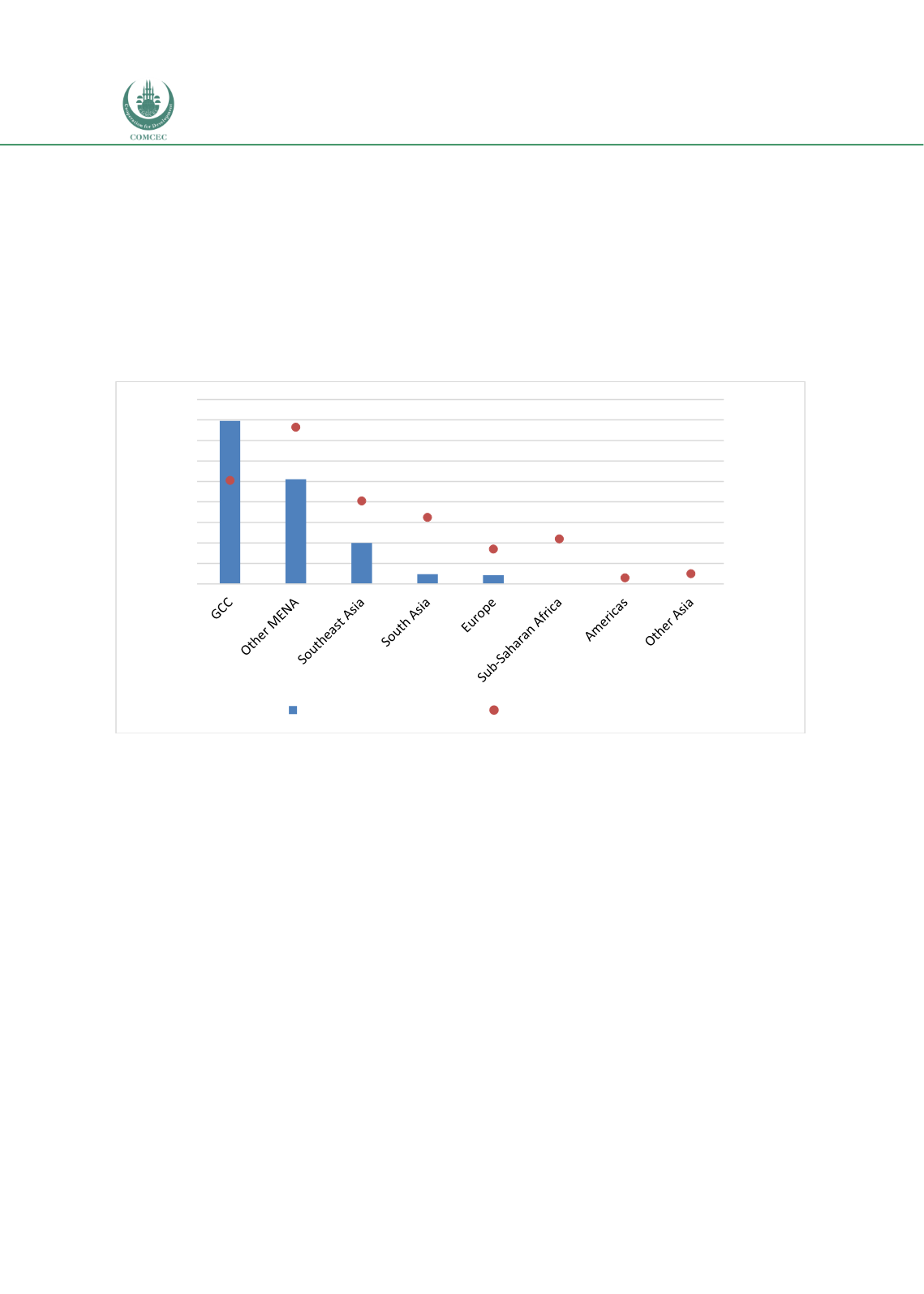

Infrastructure Financing through Islamic
Finance in the Islamic Countries
56
large investments needed in most infrastructure projects and as most Islamic banks are
relatively small, banks usually participate in these projects through syndications whereby a
group of banks come together under an agent bank to finance a large project. Usually, a lead
financial institution will organize a syndicate and invite other financial institutions to
participate under a participation or investment agency agreement. In Islamic finance, the
relationship between the lead institution and the others can be in the form of the wakala
(agency) or mudarabah structure. In the former, the lead bank acts as an agent for all the banks
in dealing with the financing with the Project Company, and, in the latter, the lead bank acts as
a manager (mudarib) on behalf of the other investing institutions.
Chart 3.10: Distribution of Islamic Banks and Assets (USD billion)
Source: ICD & TR (2017)
Traditionally, syndicated finance is used at the second stage of the raising of funds by the
Project Company in the form of debt. In the case of Islamic finance, debt-based financing can
take the form of
istisna
,
murabahah
,
tawarruq
, and
ijarah
(Shah 2008) depending on the type
and need of financing. For example, if there is a need to finance an asset such as capital
equipment or raw materials,
murabahah
can be used in syndicate financing. In these cases, the
syndicate will purchases asset and then sell it to the Project Company at a mark-up. However,
if the assets cannot be identified and the Project Company needs cash, then
tawarruq
is used.
Due to the fixed nature of the debt-based structures, these may not be suitable to provide
finance with longer tenures. In these cases, syndicates can use the
ijarah
structure to finance
project assets with a variable rate of return.
Islamic banks can also participate in infrastructure investments with conventional financial
institutions through financing a tranche of the project whereby they invest in a part of the
infrastructure assets. The other parts of the investments would be provided by other financial
institutions which can also be conventional finance. In such cases, the transaction will be
divided into two components, one of which would be conventional and the other one Shariah
compliant (McMillen 2008). In order to segregate the conventional and Islamic components,
the part that is financed by the Islamic tranche has to be insulated from the rest of the project.
For example, a specific part of the project will be identified and a Shariah compliant structure
795.7 511.3 200.2 47.0
42.6
1.7
0.3
0.1
101
153
81
65
34
44
6
10
0
20
40
60
80
100
120
140
160
180
0
100
200
300
400
500
600
700
800
900
No. of banks
USD billion
Banking assets (US$ billion)
No. of Banks/Windows
















